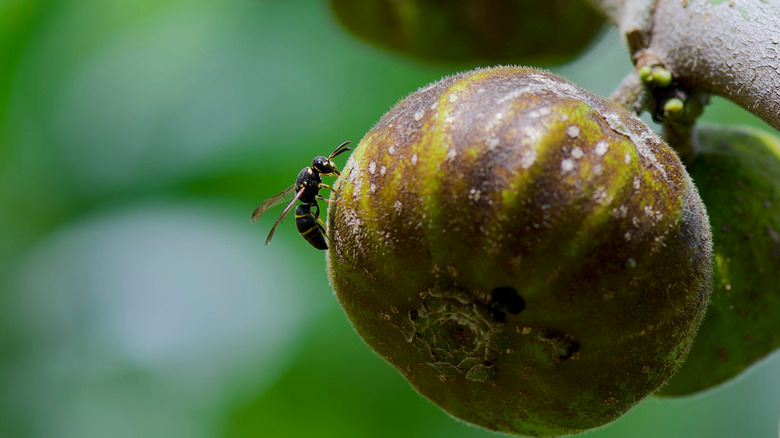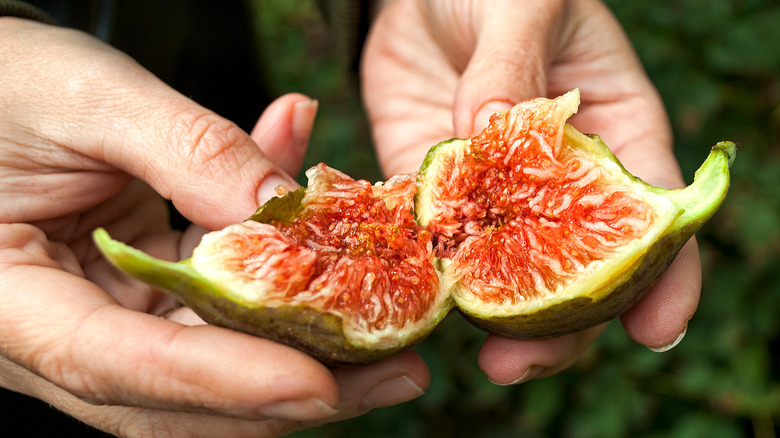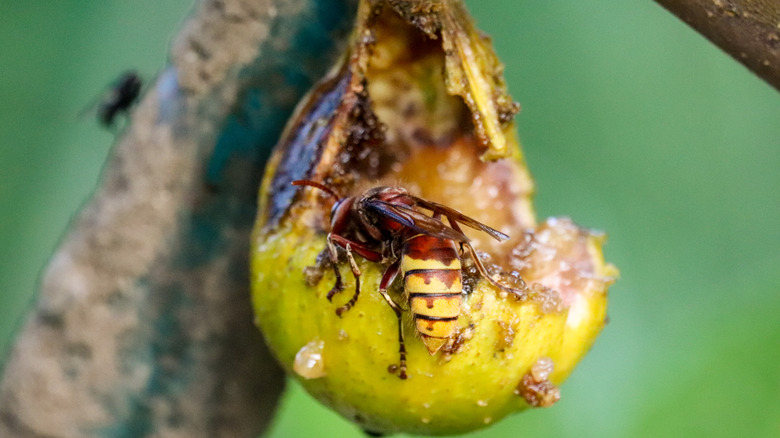Why Fig Trees Are Notorious For Attracting Wasps
Figs and wasps have a symbiotic relationship dating back millions of years. While the claim that every fig you eat has a dead wasp inside it isn't true, it is the case that fig wasps are the pollinators for fig trees that require pollination, and many types of wasps are attracted to sweet fruits like figs, especially in the fall. For those reasons, growing figs may not be worth it for gardeners who want to avoid attracting wasps, regardless of how good the fruit tastes.
Figs (Ficus spp.), unlike most other plants, don't have visible flowers. Instead, the flowers are hidden inside a large, specialized stem that eventually develops into the fruit we eat. Traditionally, these hidden flowers must be pollinated by fig wasps, which crawl inside the fig, depositing pollen and laying their eggs. Not all modern fig plants require pollination, though. Since at least 11,000 years ago, humans have been domesticating fig trees and creating sterile varieties which ripen with no fertilization necessary.
Figs and pollination
Fig trees whose fruit ripens without fertilization are referred to as common figs. These are the varieties most often grown both commercially and by backyard gardeners today. Many popular common fig varieties, like celeste, which is hardy to USDA zone 7, and Chicago hardy, which is hardy down to zone 6, even grow in areas where fig wasps can't survive, so it's fortunate these plants don't require them for pollination.
The fig varieties that require fig wasps for pollination are considered caducous figs and include Smyrna, also called Calimyrna, figs. These figs require fig wasps to transfer pollen to them from inedible caprifigs. So when the trees were imported to the U.S., their specialized fig wasps, called Blastophaga psenes, were also brought over. Unfortunately, most of the United States is too cold for both these figs and their pollinators, so most caducous figs are grown in Southern California. Before planting a fig tree, you should know what variety it is so you can ensure you're able meet its temperature and pollination needs.
Wasps and ripe fruit
Even though most backyard fig plants don't require wasps for pollination, you may still see yellow jackets and paper wasps swarming around your fig tree in the late summer and fall. These wasps aren't there to pollinate the figs, though. Instead, they are foraging for food and are attracted to the sweet fruit. This is far from a problem unique to figs, and wasps are considered a major pest for many fruits, including grapes, berries, and peaches.
Preventing these pests from ruining your harvest and attacking your family requires persistence. It is recommended to harvest your figs regularly, perhaps even daily, to avoid letting them become overripe and attracting pests. Be sure to discard any fruits that fall to the ground as well. Additionally, you can try growing strong-smelling plants that are said to repel wasps from your yard. Mint, marigold, and pennyroyal all have a reputation for keeping wasps away for good.


